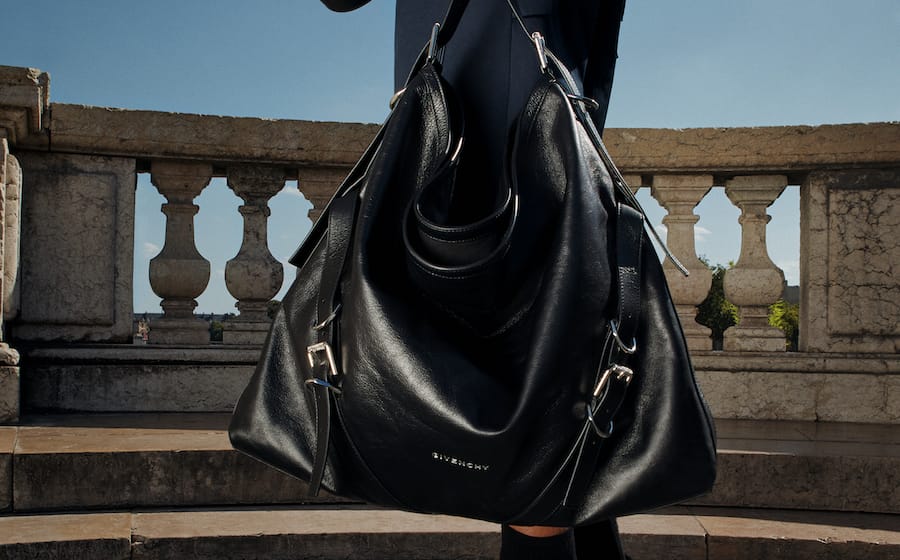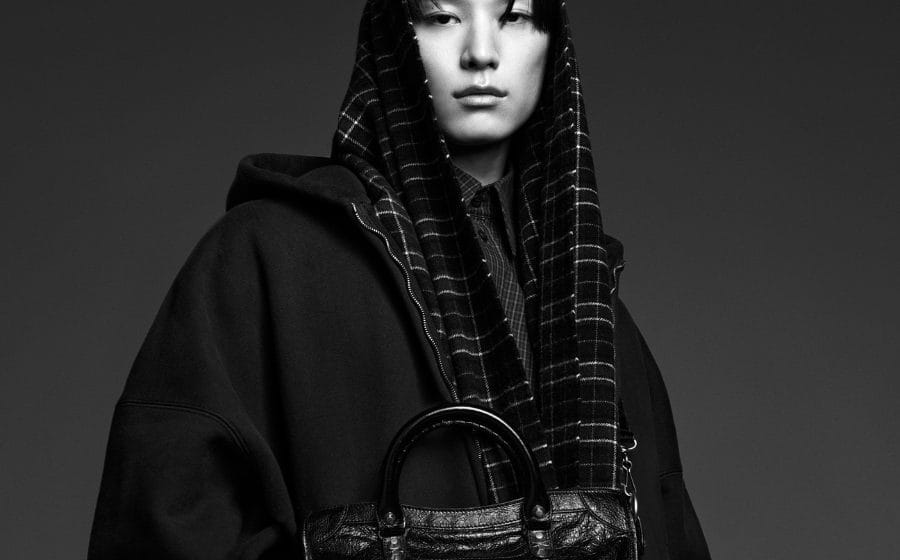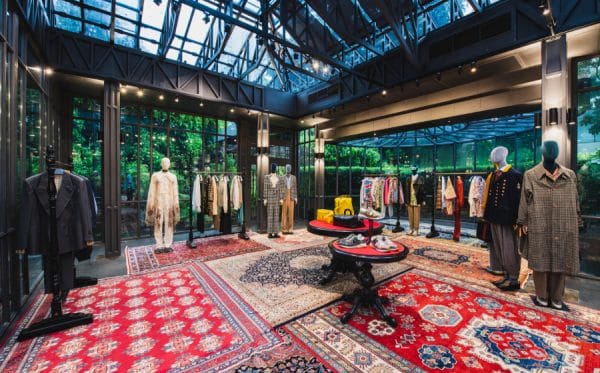
All the world’s a stage, and all the men and women merely players” make for an accurate starting point of the Gucci Fall/Winter ‘19 collection. The obvious theatrics, replete with Jason Voorhees-esque masks, reinforces the stagecraft of the runway show. Creative director, Alessandro Michele, recalls the works of German philosopher and political theorist Hannah Arendt, where masks appear on the runway as a metaphor (literally, as they would not be produced for sale) to explore expressions with garments – what we choose to wear shows a singular articulation, while consciously concealing others.
With his inspiration clear, Michele immediately topples the one-track mind of the fetishised mask like a house of cards and veer off the clichéd path of dark leather and skin-hugging silhouettes. Instead, the Gucci Fall/Winter ‘19 collection presents an idyllic array of prints across styles of generous proportions. The most arresting print is the Zodiac, inspired by a Persian carpet dating back to the early 1900s bearing motifs of stars as well as zodiac and celestial elements. Here, it mesmerises as a back panel of a quilted bowling shirt. Other interesting prints include the Feline, which sees an imaginary Savannah forest richly populated with animals like jaguars, tigers, lions, leopards, horses, and dogs; and the Checkerboard Belt, which features belts and the double G buckle interspersed with marine-inspired ropes forming knots in the shapes of hearts and stars.
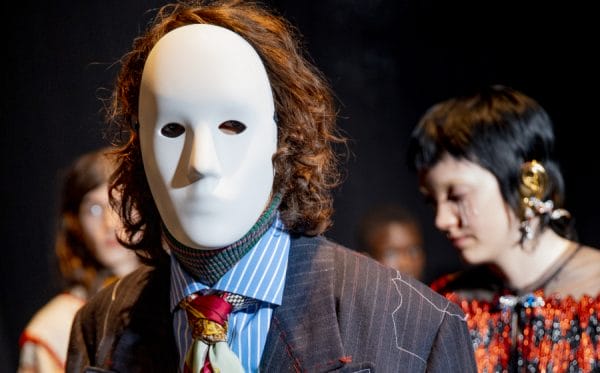
While the mask serves the dual function of showing and hiding, it also creates a tension between opposing impulses: exhibition and concealment, manifestation and protection, vanity and modesty. The fascinating prints are an exhibition, manifestation, and vanity of the Gucci Fall/Winter ‘19 collection, but Michele does not want the audience to forget that craft is at the heart of Gucci.
Quietly protecting the modesty of the storied maison, key seasonal styles of the bowling shirt and the maxi shorts bring across a contemporary streetwear sensibility. The former being a typical style of the spring/summer seasons has been quilted and lightly padded to be worn as an outerwear. A trans-seasonal version of the bowling shirt made of washable and wearable paper also shows the latitude of innovation in Gucci. Tailoring, the biggest pillar of menswear, has also been quietly concealed under the guise of a trendy three-piece suit – double-breasted half-canvassed jacket worn over a boxy shirt and paired with jogging-fit working pants.
Gender fluidity, which is distinctive to Michele’s Gucci, and the collection’s inspiration of duality is extensively explored with cornelly lace shirts, billowing sleeves, and high-waisted pants worn right under the chest, almost corset- like. This brings to mind the question of these garments’ outward expression – can men own traditionally female stylistic traits? The variability of the answers have expanded with each season as male celebrities like Jared Leto and Harry Styles stepped onto red carpets in these styles without compromising their masculinity. Arendt’s philosophy of the mask is in full play here.
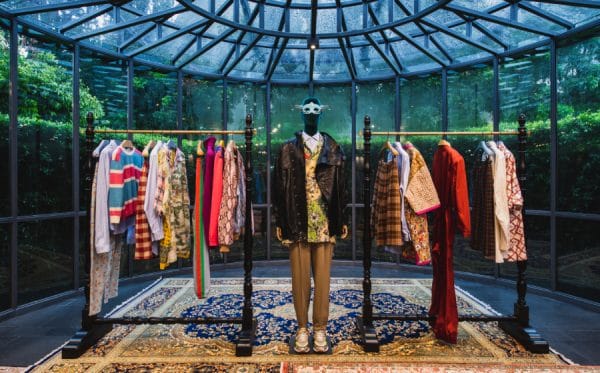
The sneakers on the runway also express multiplicity with various incarnations of the maison’s logos – the vintage Gucci label adorns the tongue, the interlocking “GG” is on the lace holder, an embroidered “G” on the side, an embroidered “Gucci” script on the side as well as on the sole, and another “GG” logo on the outsole. Other than the logos, multiplicity is also explored with a mix of materials and colours on the sneakers.
If the one is wondering where the mask’s nature of concealment can be found, he would have to take a closer look. Michele hid away tiny intriguing details into his designs like sartorial labels that can be found on the sleeves on suit jackets and embroidery on chenille streetwear pieces. They feature mottos of “Maison de l’Amour” (house of love) and “Sine Amore Nihil” (nothing without love) alongside Gucci symbols, Roman numerals “XXV”, and Michele’s zodiac sign, Sagittarius. Michele also snuck spiked wordings onto the back of the heels of the formal shoes that sport the iconic Horsebit held by gold chains such as “Ice Lolly”, “Kitten”, and “Sucker”, probably as a nod to the wearer’s innocent nature that would otherwise be exploited when outwardly expressed.
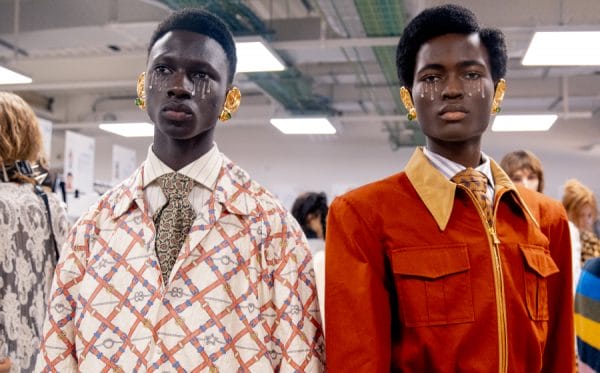
To many, the Gucci Fall/Winter ‘19 collection might be a dazzling array of fashion, but with an understanding of Michele’s vision of the mask, the audience gains a deeper appreciation of the layered facets in expression. There is no singularity in “correctness”, and it is only through the acceptance of “being different” that barriers can be torn down and progress be made. Fans should be happy to know that wearing Gucci is not about just wearing the trendiest brand in town; the designs of the garments and accessories are so considered that fashion annals would gladly include them.


